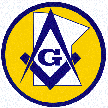Brother Doug,
Over the past several years our lodge has raised several Brothers of Liberian descent. One of our members traveled to his home country Liberia. There he visited a Lodge and was well received. He had a conversation with the Master and their Master would like to become, for lack of a better term, a "Sister lodge" of our Lodge. To my knowledge, I have heard of only this one member communicating with a Lodge in Liberia, (again, I will speak to this Brother about the situation). I do know that many of the members we have raised spoke of how hard it is to become a Mason in Liberia. And I assume that many of them, should they travel back to their home countries would want to be accepted into a Lodge.
I realize that our member should not visit a clandestine lodge nor should he converse Masonically with a clandestine Mason. With that said, I would like to see if I can get the recognition process moving. What can we do to get started?
W. Brother Al
Hello W. Brother Al,
Yes, for you or any member of a lodge under the Grand Lodge of Minnesota to be able to converse Masonically with a member of a lodge in Liberia, or any other unrecognized lodge, the lodge’s Grand Lodge and the Grand Lodge of Minnesota would first need to recognize each other. This is not a process that is very easy, nor is it accomplished by an individual Mason or an individual lodge, other than the process needs to start somewhere. The recognition process is complicated and time consuming. The younger Grand Lodge must be the one to request recognition from the older Grand Lodge. My records show that there was a Grand Lodge of Liberia constituted in 2001 and another one in 1883. In either case, the Grand Lodge of Minnesota was constituted in 1853, making us the older Grand Lodge. There is little or no information on the web on the Grand Lodge of Liberia.
Long story short, if the person you are dealing with wants us to recognize his Grand Lodge, then his Grand Lodge will need to make a formal request for recognition. That request should contain their constitution and bylaws, among other things. They will need to certify that they adhere to the long established standards for recognition, which include these elements:
1 Legitimacy of origin
2 Exclusive territorial jurisdiction, except by mutual consent
3 Adherence to the Ancient Landmarks
Before the Grand Lodge of Minnesota would act on such a request, with such action taking place at an Annual Communication of the Grand Lodge of Minnesota, the request would go to our External Relations Committee. Before our External Relations Committee will be likely to act on such a request, the foreign Grand Lodge would first need to make its presentation to the Committee on Information for Recognition of the North American Conference of Grand Masters. This part of the process would likely take a year or two at best. The Commission on Information for Recognition was organized in 1951 as a facility to gather, collate and from time to time, revise information on Grand Lodges in other lands, as a service to the Grand Lodges of the Conference of Grand Masters of Masons in North America. The Commission neither advises nor recommends that recognition be given to any Grand Lodge, but merely inquires whether or not it considers that a Grand Lodge in question satisfies the conditions of regularity. The Conference of Grand Masters of Masons in North America meets every February and a report from the Commission on Information for Recognition generally follows within several weeks.
As you can see from what I am saying here, this is a process that can easily take a few years. But like every project, it starts with the first step. If the Grand Lodge of Liberia wants to take that step then by all means, they should do so.
Doug
Wednesday, April 28, 2010
Subscribe to:
Posts (Atom)

